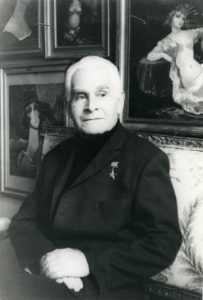
1896 - 1980
Lado (Vladimir) Davidovich Gudiashvili
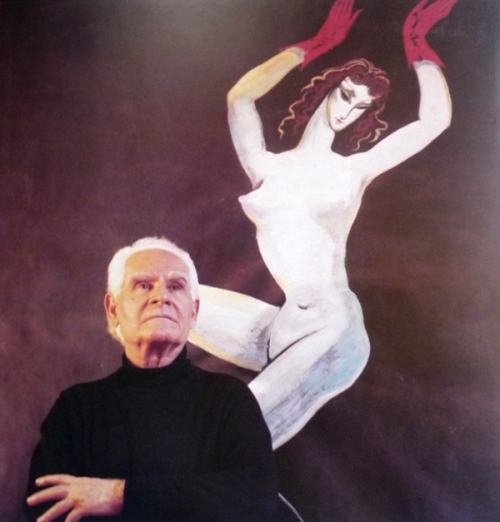
description
An outstanding Georgian painter, a monumentalist, graphic artist, illustrator, talented teacher, professor of the Academy of Arts of Georgia. He worked in the styles of Post-impressionism, Art Nouveau, Symbolism and Primitivism.
He was born in a fairly well-to-do family of a railway employee. The boy’s mother soon began to notice his great ability to draw. Parents bought Lado a bicycle, and he traveled 20 km to Mtskheta to paint ancient churches there.
The painter that lived in Paris a long time and became famous in Europe and America, became the embodiment of innovative trends in painting in his country. He was the first professional artist to depart from the gloomy palette characteristic of the Georgian fine arts. He worked in different modern styles, avoiding only non-figurative styles and is considered the continuer of the ideas of great Pirosmani. Lado Gudiashvili was a member of various creative communities, was awarded high state ranks and prizes (People’s Artist, Hero of Labor, etc.)
The creativity of Lado Gudiashvili differs in an incredible variety of genre and technique of performance: he wrote with oil, watercolor, gouache, worked in a mixed technique, performed wall painting, created graphic works of art. In the artist’s heritage, there are portraits and landscapes, historical paintings and allegorical, mythological and even political works. The nature of the canvas is either epic, or philosophical, or lyrical. Probably, therefore, the master himself refrained from assessing his style, which, nevertheless, is easily recognized, because the motives of his work, especially the early ones, are almost exclusively Georgian.
In the capital of Georgia, the house-museum of Gudiashvili was opened, one of the squares of Tbilisi was named after him. The artist’s paintings continue to excite the viewer and remain in demand. For example, in 2013, the Sotheby’s house sold painting “Temptation” for 1.2 million dollars.
Key ideas:
– Gudiashvili rarely drew from nature. That is why he created few still lifes, and most of the recognizable urban views were painted in the Parisian period, after which the artist departed from purely natural painting and even performed portraits by memory more often.
– Constantly present in the artist’s works are plots depicting humans and animals. For lyrical works, he chose a fallow deer or a bird, a horse, and for epic once he used a bear, a monkey or a fairytale creature.
– The distinguishing feature of the portraits is the inclusion of animals. So, there is a gazelle in the portrait of Pirosmani, and there is a doe in the portrait of G. Ulanova. Symbolism here is obvious, as small wild animals can sit on the shoulder or palm of the person depicted, as if communicating with them.
– The artist recognized that “women are participants in almost all of his paintings; they are the source of life and good.” As the crown of nature and the “incarnation of inexhaustible abundance”, they took the first place in the paintings. The master created a gallery of prominent contemporaries, depicting actresses T. Tsitsishvili and M. Shotadze, I. Rubinshtein, G. Ulanov, M. Plisetskaya, the dancers that inspired other artists. He placed perfect women in pastoral landscapes, chanting the pacifying beauty of the female body, the bliss of youth, the expectation of love.
– Lado was a great draftsman, loved and was able to perfectly convey the movement. In his graphic works, dynamics is especially noticeable if we consider the drawings for “The Knight in the Tiger’s Skin.” Typical for the artist is the change in the traditional shapes of figures and their proportions, which often gives the works a hint of decorativeness, even theatricality.
– The palette of the early Gudiashvili bright, sometimes deliberately simple – it is characterised by the influence of Primitivism, which did not fit in the tradition of Georgian painting, since the Middle Ages preferred dark colors.
– In the mature period, the colors “abate”, and, to emphasize the decorative nature of the work, the master finds other ways.
1896
1900
1910
1915
1919
1925
1930
1940
1950
1970
1980
The birth of the artist
Entered the art school at the Georgian SEA
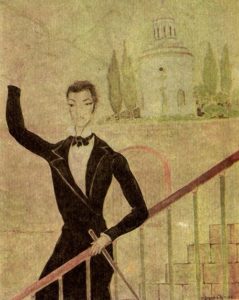
Continued to receive art education at the Tiflis School of Fine Arts, Sculpture and Architecture
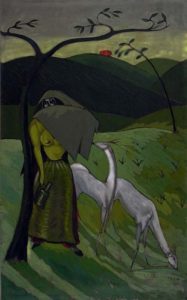
The first personal exhibition
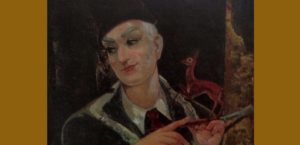
Settled in Paris
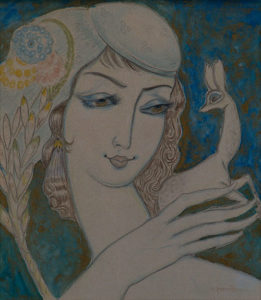
Despite his success in Europe, he returned to Tbilisi
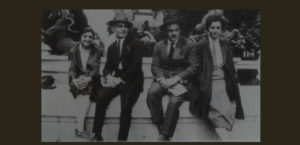
Became a member of groups "Four Arts"
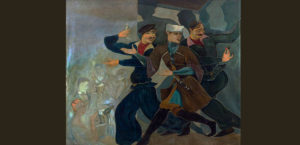
Created a cycle of anti-fascist drawings
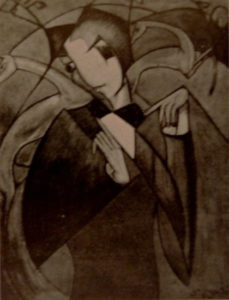
For 10 years the artist was occasionally allowed to organize exhibitions
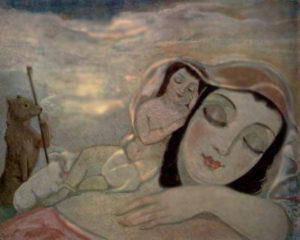
The large retrospective exhibition
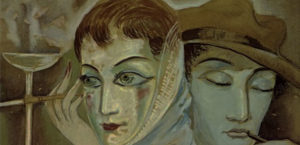
The death of the artist
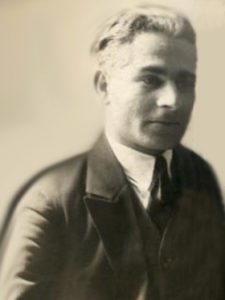
Lado (Vladimir) Davidovich Gudiashvili
On Artist
flow
Symbolism
friends
Pablo Picasso
Maurice Utrillo
Fernand Leger
David Nestorovich Kakabadze
Shalva Gerasimovich Kikodze
artists
Oscar Ivanovich Shmerling
Yakov Ivanovich Nikoladze
Niko Pirosmani
Amedeo Modigliani
Ignacio Zuloage
By Artist
flow
Art deco
friends
Jeanne Hallen
Mikhail Fedorovich Larionov
Natalya Sergeevna Goncharova
artists
Alexander Ivanovich Gigolashvili
Petr G. Alvaridze (Alvarov)
